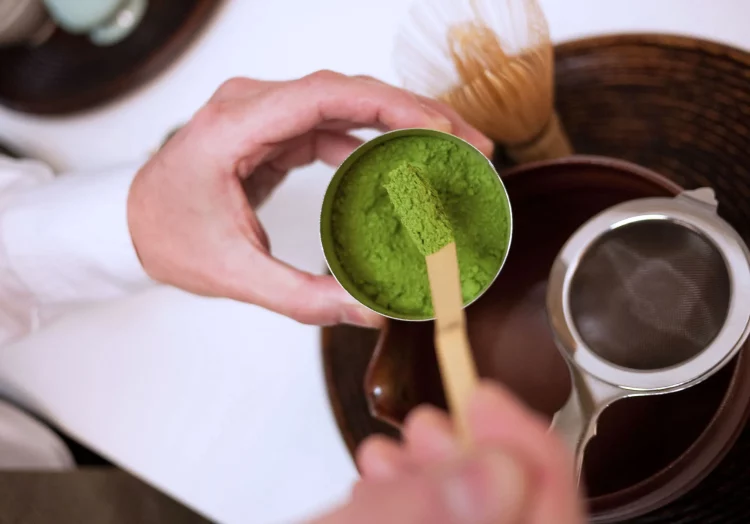Japan is renowned for its rich cultural traditions, and one of the most iconic is the Japanese tea ceremony, or chanoyu. This age-old ritual, which centers around the preparation and consumption of matcha (powdered green tea), represents much more than just drinking tea. The ceremony is a spiritual practice, a meditative experience that emphasizes harmony, respect, purity, and tranquility. The ritual has been perfected over centuries and is deeply ingrained in Japanese culture. In this article, we will dive into the heart of the Japanese tea ceremony, exploring its history, significance, and how it continues to play a vital role in modern Japan.
The Origins of the Japanese Tea Ceremony
The origins of the Japanese tea ceremony date back to the 9th century when tea was first introduced to Japan from China. Initially, tea was consumed by Buddhist monks for its stimulating effects, aiding their meditation. However, it was during the 15th century, under the influence of tea master Sen no Rikyū, that the ceremony began to take the form we recognize today.
Sen no Rikyū refined the practice of preparing tea, emphasizing simplicity and mindfulness over extravagance. His teachings formed the foundation of the three main schools of tea ceremony in Japan: the Urasenke, Omotesenke, and Muso-jikiden-ryu schools, each with its unique style and approach to the ritual.
At the core of the tea ceremony is the preparation of matcha, a finely powdered green tea made from shade-grown tea leaves. The preparation is meticulous, requiring great attention to detail and reverence for the process.
The Significance of the Japanese Tea Ceremony
The Japanese tea ceremony is more than just a social event; it is a form of spiritual practice that reflects Japanese values such as humility, respect, and mindfulness. The ceremony takes place in a quiet, serene environment, often in a traditional tea room or garden, which helps set the tone for contemplation and peace. Every gesture during the ceremony, from the way the host handles the utensils to the way the guest receives the tea, is carefully choreographed and symbolic.
The key principles that define the tea ceremony are:
- Wa (Harmony): Achieving harmony between the host, guests, utensils, and environment.
- Kei (Respect): Showing respect through every action, whether it is the preparation of the tea or the way one addresses others.
- Sei (Purity): Cleansing oneself mentally and physically before the ceremony, as well as purifying the utensils.
- Jaku (Tranquility): Attaining a sense of calm and serenity through the ritual, allowing the participant to be fully present in the moment.
Each tea ceremony is an opportunity for participants to leave behind the distractions of everyday life and enter a space of tranquility where the focus is on the moment at hand.
The Components of a Tea Ceremony
The tea ceremony involves several important elements, each of which plays a vital role in ensuring the experience is meaningful and profound. These elements include:
- Chaji: The full-length tea ceremony, which can last several hours. This includes a meal and two servings of tea.
- Chakai: The short version of the tea ceremony, which typically involves the serving of sweets, thin tea, and thick tea.
- Matcha: The powdered green tea used in the ceremony, which is prepared with hot water and whisked to create a frothy, vibrant cup of tea.
- Utensils: A variety of traditional tools are used during the ceremony, including the chawan (tea bowl), chasen (bamboo whisk), chashaku (bamboo scoop), and kensui (waste water bowl). Each utensil is carefully chosen for its beauty and functionality.
- Kaiseki: A meal traditionally served before the tea ceremony in a full-length event. The meal is designed to complement the tea and is often served with seasonal ingredients.
The host prepares the tea in a highly ritualized manner, paying attention to every movement. Every aspect, from the way the tea is whisked to the way it is served, is deliberate and full of intention.
Destination Guide: Discover the Best Tea Houses in Japan
For those looking to experience the Japanese tea ceremony firsthand, Japan offers a wealth of traditional tea houses, or chashitsu, where one can immerse themselves in this sacred practice. These tea houses are scattered throughout Japan, with some nestled in tranquil gardens, while others are located in historic cities steeped in tradition. Here are a few of the best places to experience the Japanese tea ceremony:
1. The Urasenke Chakai in Kyoto
Kyoto, the ancient capital of Japan, is home to many traditional tea houses and gardens. The Urasenke school of tea has its headquarters in Kyoto, and visiting one of their tea ceremonies is an ideal way to experience the practice. The ceremonies are held in beautiful tea rooms surrounded by lush gardens, providing a serene setting for reflection and tea enjoyment. The Urasenke school is known for its emphasis on hospitality, ensuring that every guest feels welcomed and respected.
2. The Hama-rikyu Gardens in Tokyo
Located in the heart of Tokyo, the Hama-rikyu Gardens offer a stunning setting for tea ceremonies. This historic garden, once part of a feudal lord’s residence, is home to a traditional tea house that serves as the venue for regular tea ceremonies. The tea house sits beside a picturesque pond, creating an atmosphere of tranquility amidst the bustling city.
3. The Adachi Museum of Art in Shimane
While the Adachi Museum of Art is primarily known for its stunning Japanese gardens, it also offers a traditional tea ceremony experience. Set against the backdrop of the museum’s renowned gardens, the tea ceremony here is a perfect blend of art, nature, and culture. The calm atmosphere enhances the sensory experience of drinking tea while surrounded by beautiful landscapes.
4. The Kiyomizu-dera Temple in Kyoto
Another iconic location in Kyoto, the Kiyomizu-dera Temple, offers a unique opportunity to experience the tea ceremony in a historical and spiritual setting. The temple’s surrounding gardens provide a peaceful environment, allowing visitors to appreciate the ceremony’s spiritual aspect. The ceremony at Kiyomizu-dera is a deeply meditative experience, connecting guests with the temple’s serene atmosphere.
5. The Jingu Meiji Shrine in Tokyo
For a more modern take on the traditional tea ceremony, the Meiji Shrine in Tokyo offers ceremonies that combine elements of Shinto with the rituals of tea. The serene forested area surrounding the shrine creates a peaceful environment for the ceremony, allowing participants to reflect and experience a blend of spiritual and cultural traditions.

Gourmet Dining: Savoring Traditional Japanese Sweets During Tea Ceremonies
In addition to matcha, Japanese tea ceremonies are often accompanied by a selection of wagashi, traditional Japanese sweets that are served to balance the bitterness of the tea. These sweets are not only a delight to the taste buds but are also a feast for the eyes, as they are often beautifully crafted to reflect the seasons, nature, or important cultural symbols.
1. Mochi
One of the most popular types of wagashi is mochi, a chewy rice cake made from glutinous rice. Mochi is often filled with sweetened red bean paste or flavored with matcha, making it a perfect complement to the rich, umami taste of matcha tea.
2. Yōkan
Yōkan is a thick, jelly-like sweet made from red bean paste, agar, and sugar. It has a firm, smooth texture and is often cut into cubes or slices. Yōkan can be flavored with matcha, chestnut, or other seasonal ingredients, offering a delightful contrast to the tea’s bitterness.
3. Nerikiri
Made from a blend of white bean paste and rice flour, nerikiri is a delicate, soft wagashi often molded into beautiful shapes such as flowers or animals. Its subtly sweet taste and smooth texture make it a perfect accompaniment to matcha tea.
4. Kashiwa Mochi
Kashiwa mochi is a type of mochi wrapped in an oak leaf and typically filled with sweet red bean paste. It is commonly eaten during the celebration of Tango no Sekku, or Children’s Day, but can also be enjoyed during tea ceremonies, offering a slightly more fragrant and earthy flavor due to the oak leaf.
5. Anmitsu
Anmitsu is a more elaborate dessert that often includes sweet red bean paste, agar jelly cubes, fruit, and syrup. While it may not always be served during the formal tea ceremony, it is a popular sweet treat in many traditional Japanese tea houses, providing a refreshing complement to a cup of tea.
Conclusion
The Japanese tea ceremony is a beautiful expression of Japanese culture, offering a deep connection to the past and a path to inner peace. Whether you are experiencing the ceremony in one of Japan’s most historic tea houses or simply savoring a bowl of matcha at home, the ceremony invites us to pause and reflect on the present moment. The accompanying sweets, with their delicate flavors and artistry, enhance this sensory experience, allowing participants to immerse themselves in the rich traditions of Japan.
By visiting the tea houses of Japan, one not only experiences the art of tea but also gets a glimpse into the soul of Japanese culture—its values, aesthetics, and respect for nature. Whether you are a seasoned traveler or a first-time visitor, the tea ceremony promises an unforgettable journey into Japan’s serene and meditative world.





















